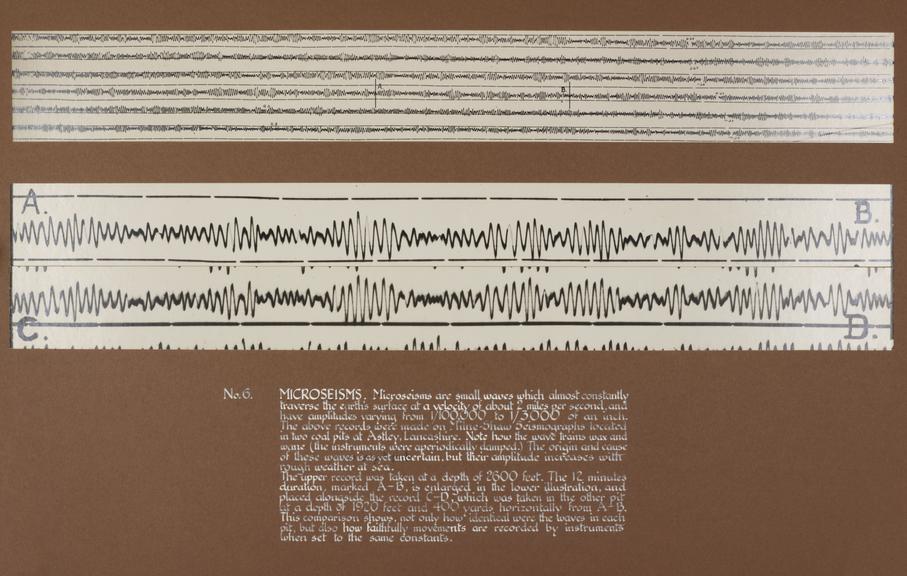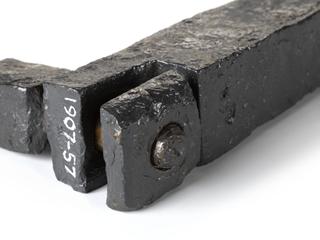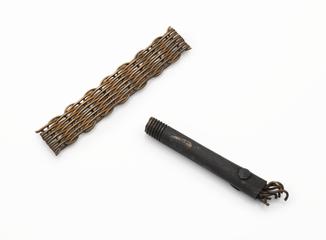
Enlarged recordings of microseisms, 1925

Photoenlargement of a seismogram of microseisms, recorded on Milne-Shaw seismographs in coal pits at Astley, Lancashire, England in 1925. Mounted on display board with caption: ‘No.6. MICROSEISMS. Microseisms are small waves which almost constantly traverse the earth’s surface at a velocity of about 2 miles per second, and have amplitudes varying from 1/100,000 to 1/3000 of an inch. The above records were made on Milne-Shaw Seismographs located in two coal pits at Astley, Lancashire. Note how the wave trains wax and wane (the instruments were aperiodically damped). The origin and cause of these waves is as yet uncertain, but their amplitude increases with rough weather at sea. The upper record was taken at a depth of 2600 feet. The 12 minutes duration, marked A–B, is enlarged in the lower illustration, and placed alongside the record C–D, which was taken in the other pit at a depth of 1920 feet and 400 yards horizontally from A–B. This comparison shows, not only how identical were the waves in each pit, but also how faithfully movements are recorded by instruments when set to the same constants.’
Milne-Shaw seismographs were amongst several designs of mechanical, pendulum-based seismograph available in the early 1900s that could detect the vibrations from distant earthquakes. They were modified versions of a device originally designed by seismologist John Milne around 1895, but incorporating a system of electromagnetic damping (to prevent the horizontal pendulum acquiring its own swing) and providing records of greater magnification. These modifications were designed by John Johnson Shaw, a seismology enthusiast who built the instruments himself for despatch to observatories and stations around the world.
Though when these records were made the causes of microseisms were unknown, scientists now attribute these faint earth tremors to water waves on oceans and lakes.
Details
- Category:
- Geophysics
- Object Number:
- 1926-665
- Materials:
- paper (fibre product)
- type:
- seismogram
- credit:
- Shaw, John Johnson



